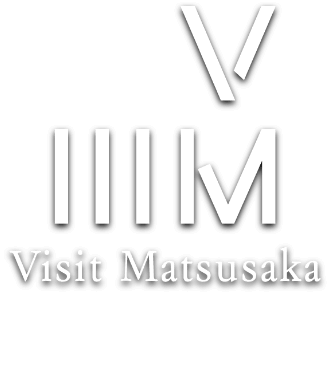
In the previous article, we introduced ‘Kamenarien’, a guesthouse located near the edge of west Matsusaka. This time, we’d like to introduce you to ‘Relashanti’, another guesthouse with fun-filled activities surrounded by nature.

Relashanti is located in the prefectural border of Mie (Matsusaka City) and Nara. Over here, you can simply spend a relaxing time with the animals-Relashanti has a housecat, a dog, two goats, and a chicken farm-or enjoy fun activities such as outdoor BBQ, konjac jelly making, vegetable dyeing, summer limited charcoal-grilling amago (red-spotted masu trout), and more!
Today, I am here only for the ‘konjac jelly making’ and the ‘charcoal-grill amago’ experience.

Contrary to the typical Japanese guesthouse, Relashanti has a very modern rustic interior, like a nice and cozy log cabin.

English and Chinese instruction on the bio-toilet is available, so there’s no need to worry about its operation!
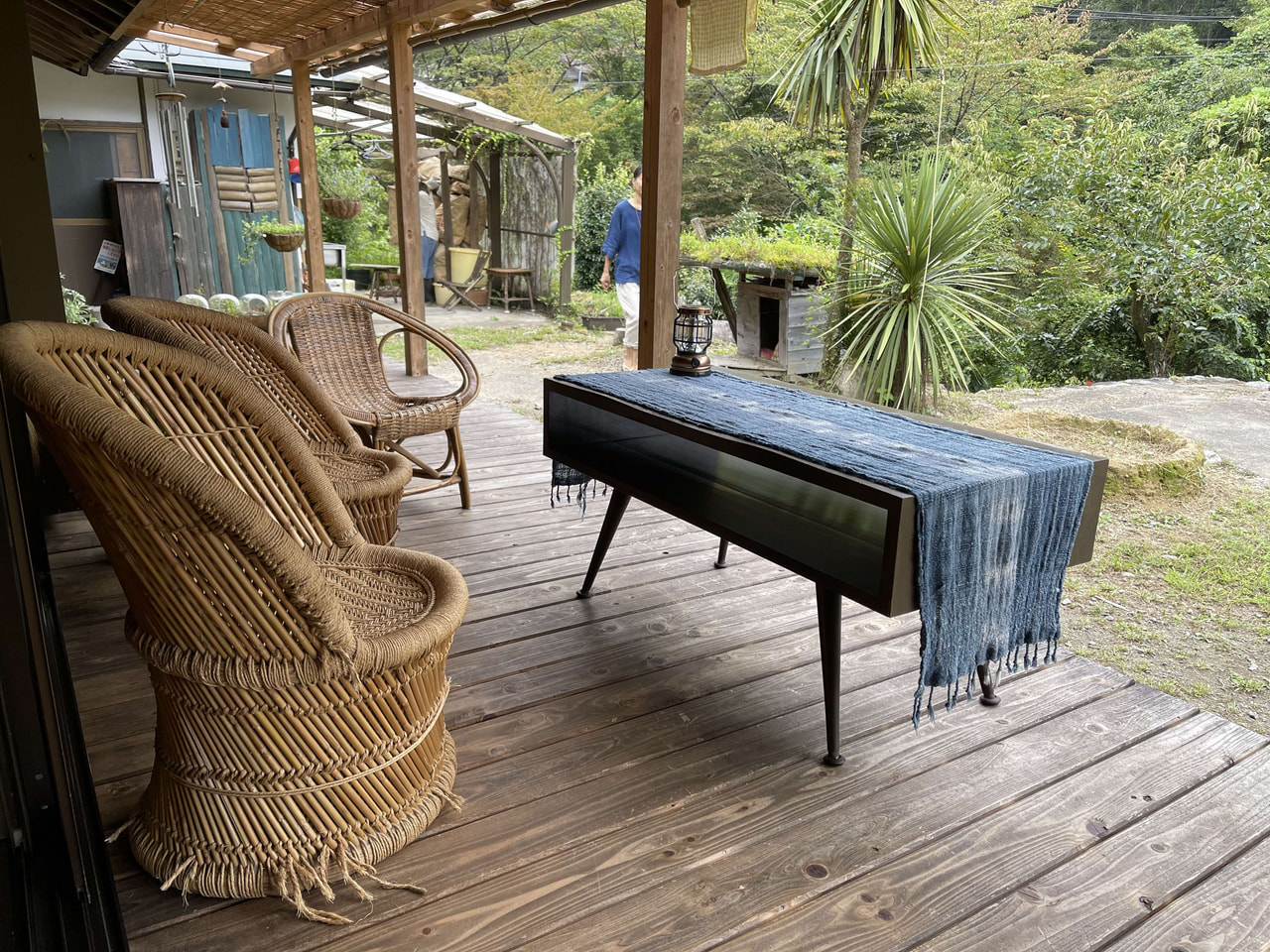
I can imagine enjoying a peaceful time at the porch with a cup of coffee in the morning, or a cup of hot chocolate while gazing up at the starry sky at night.
Now that I’m done fantasizing about how much I’d like to spend my time here, let me give a brief introduction about the animals at Relashanti before moving to the experiences.
Animals of Relashanti
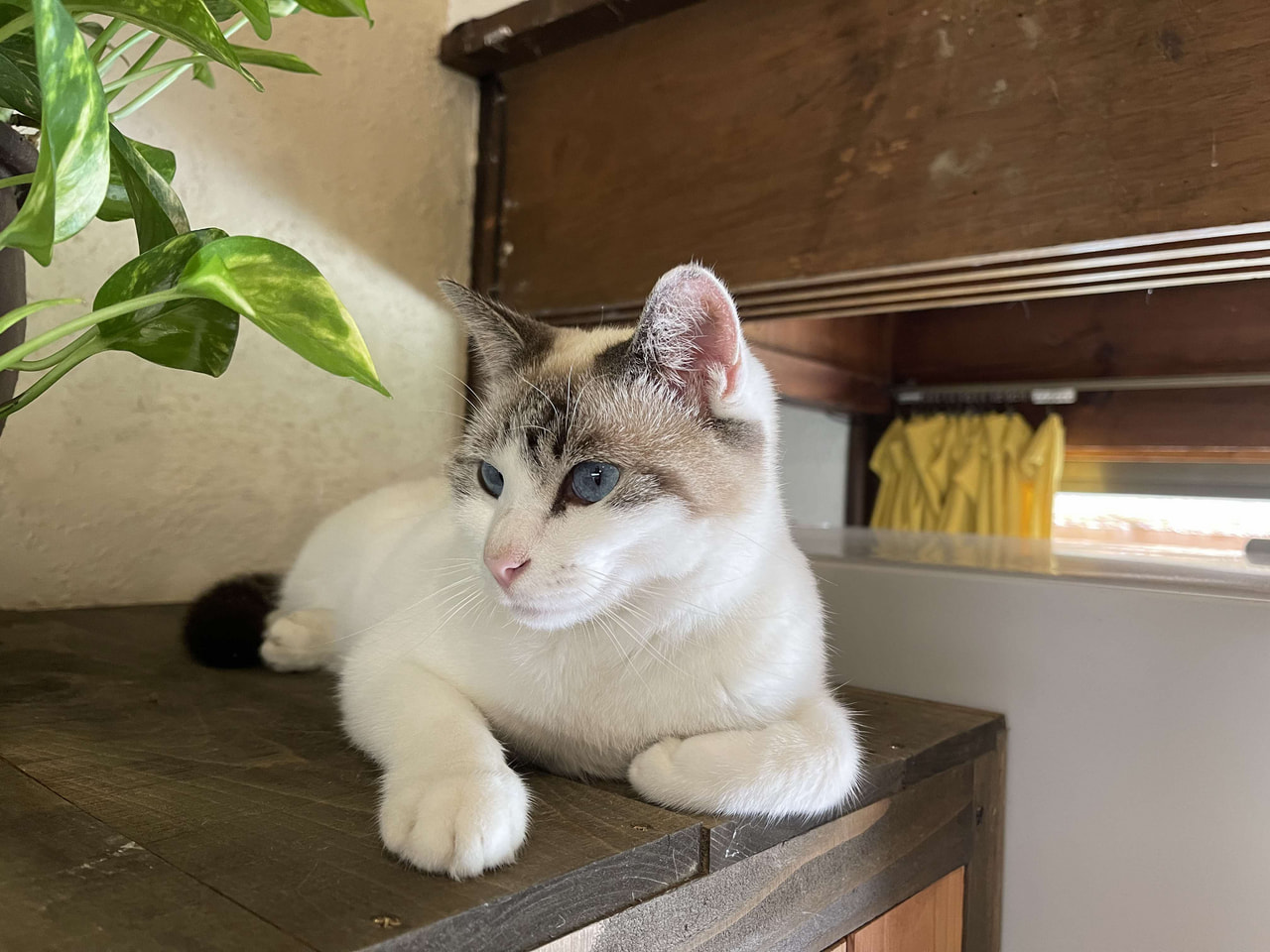
It’s a bonus if you’re a cat lover! Ten-chan is a very calm and friendly cat.

Not only cat lovers, but dog lovers are in for a treat as well!

Nana-chan and Kun-chan are always eating, which helps with the maintenance of the weeds.
You can also take them for a walk!
Charcoal-Grill Amago Experience
Before we begin charcoal-grilling, we have to first get our hands dirty from gutting and skewering the live amago. For people that don’t want to do it, the host can prepare it in their place as well.
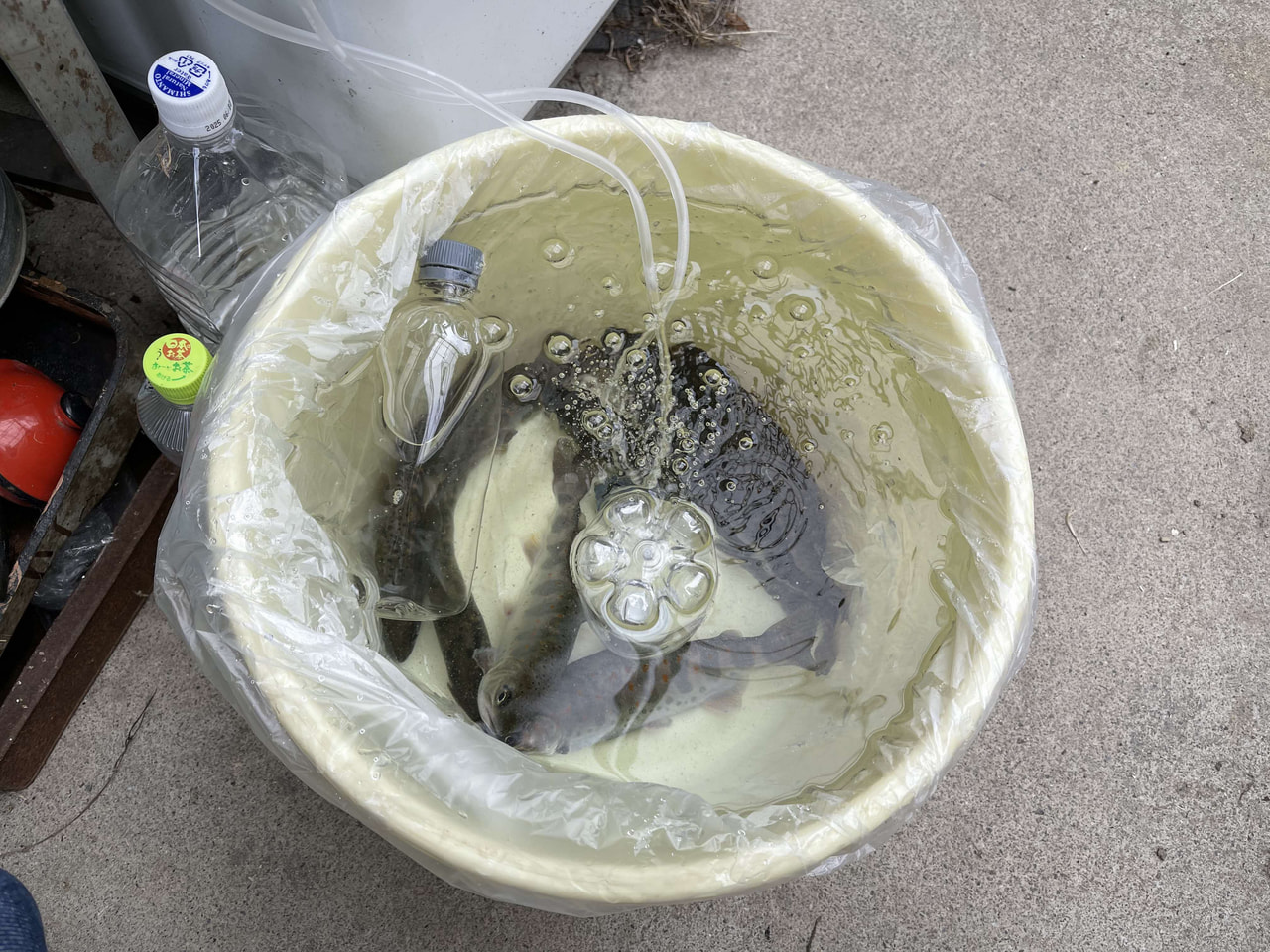
Until this very moment, I thought I’d be handling freshly caught amago that was already dead.

The host will first teach and demonstrate the whole process.

If you let your guard down, the slippery amago will jump right off your grip!
After the demonstration, it’s now my turn to try cleaning and gutting.

It is crucial to hold the amago down firmly on the chopping board.
The fish were really active that day, even the host could not hold them down sometimes.

The next step is to get our hands dirty and pull out the internal organs of the amago, and then clean it with running water.

The final step is to skewer the amago with a bamboo stick and then season it with salt.
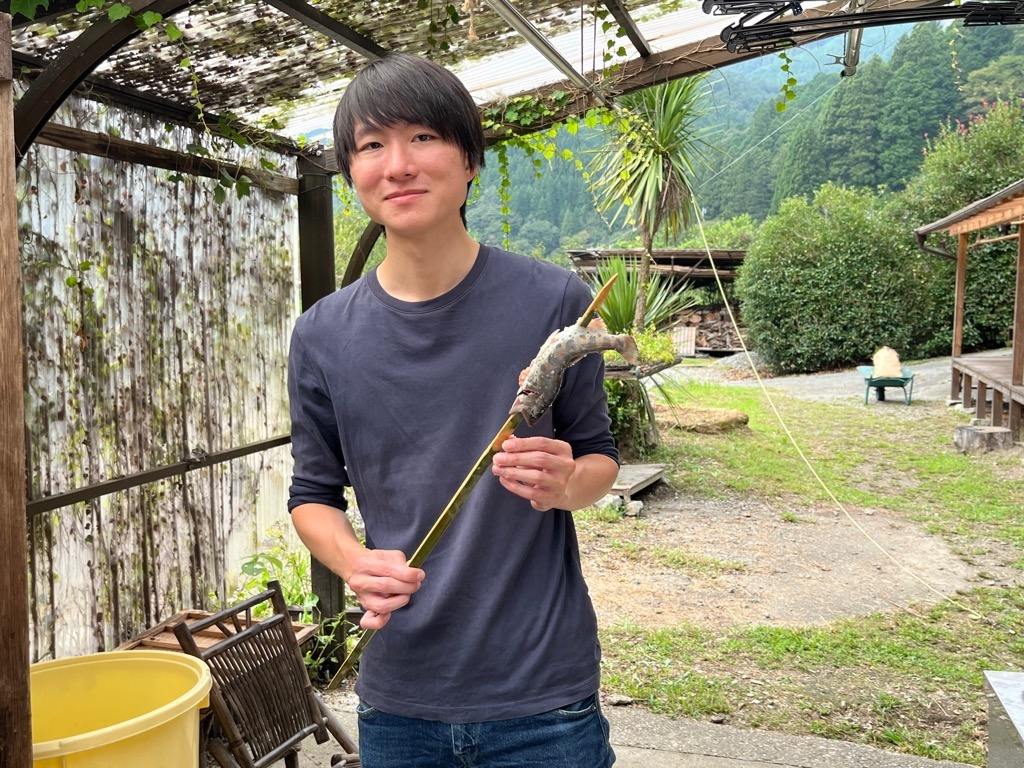
As someone that has never gutted a fish, let alone live fish, it felt like I was learning how to swim in the ocean right away instead of the swimming pool.
In my opinion, I have definitely acquired important life skills from this experience.
Not only I’ve learned how to gut a fish, I have also increased my chances of surviving if I were ever stranded on an island.
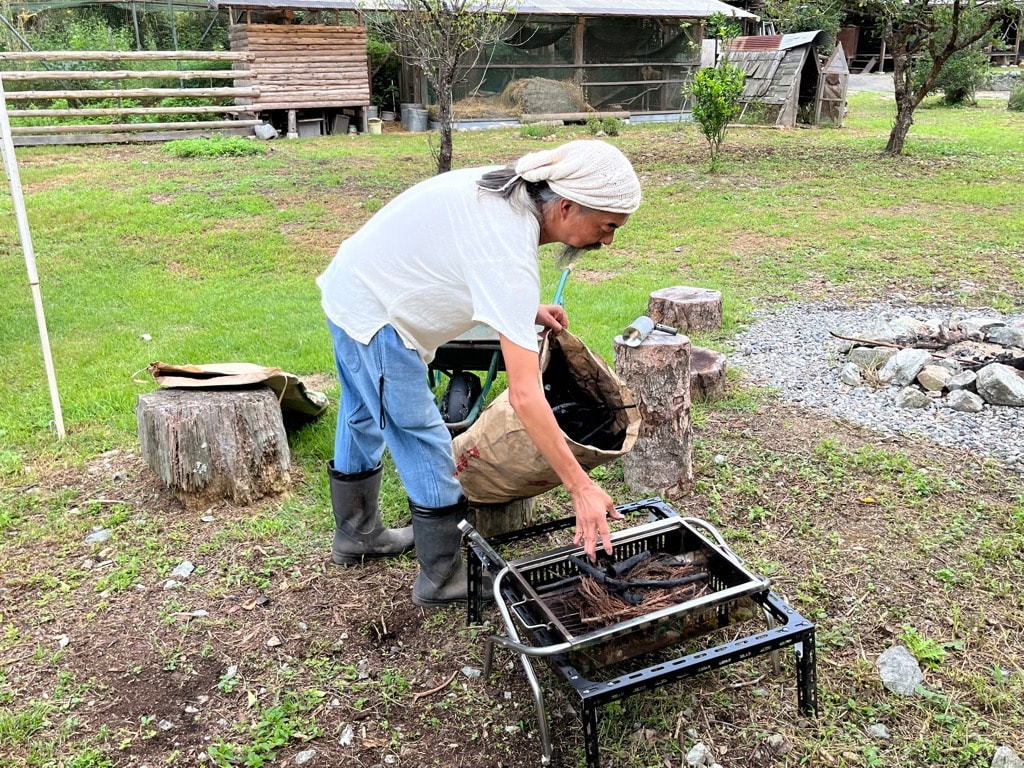
The host will set up the grill and begin grilling using unwanted charcoals from the local charcoal factory.
One of the important things that I’ve learned throughout all my experiences so far is Japan’s “もったいない” (Mottainai) culture, which is the idea of respecting resources and not wasting them. Besides the charcoal, the furniture in the guesthouse, such as the sofa and dining table, are either unwanted vintage items from their grandmother and relatives, or items that they DIY and reuse. The interior of the room was also handmade with old wood and wood scraps.

The smell of the amago grilling is so appetizing and I can’t wait to taste it!
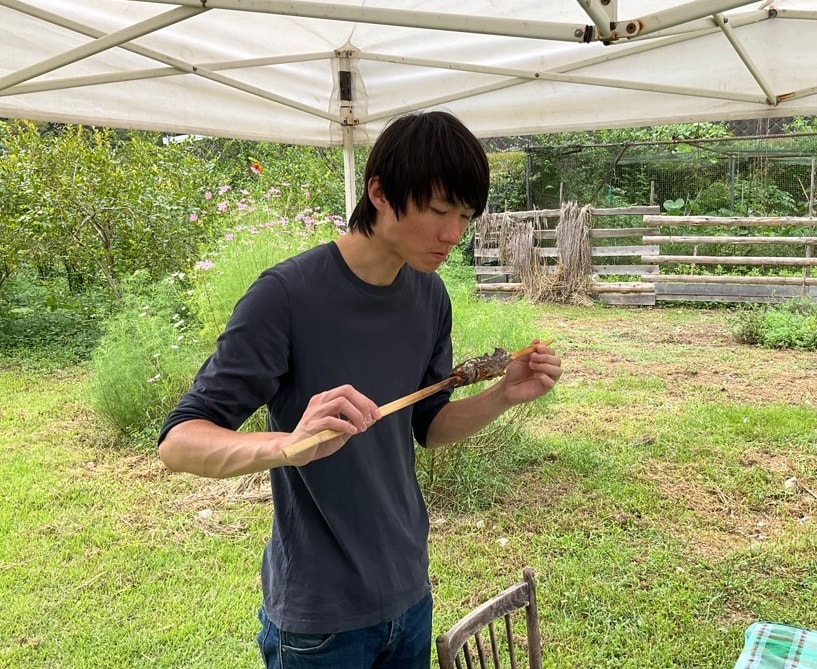
The amago has a nice crispy texture, and the head can be eaten as well.
It’s very fresh and tasty, and will definitely go perfectly with a glass of beer!
Konjac Jelly Making Experience
The process of making konjac jelly is a pretty simple one.
Only 3 ingredients are required: konjac, hot water, and “灰汁” (aku) – lye.

At Relanshanti, they use a konjac jelly making method which is passed down by the locals.


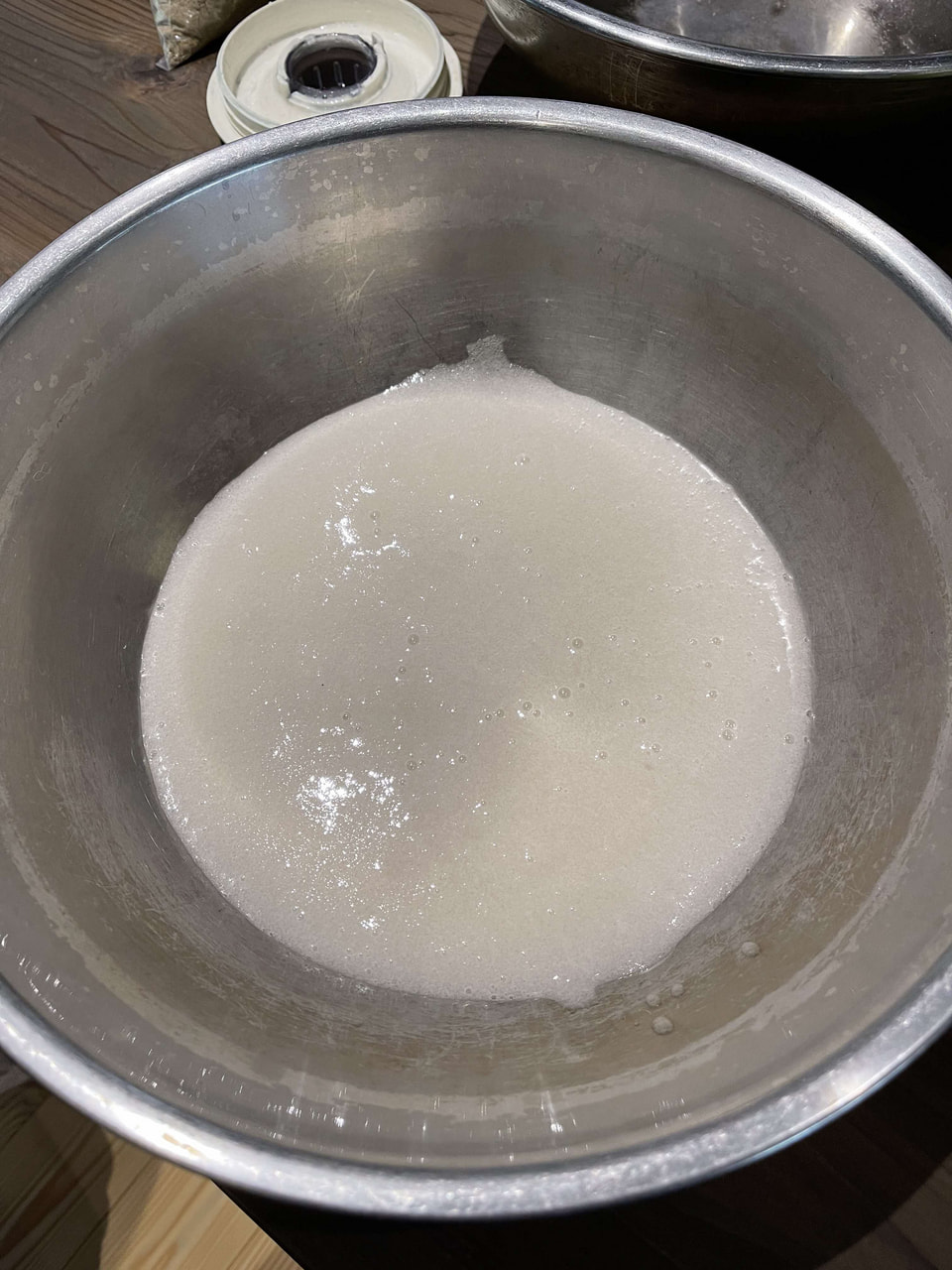
It takes around 2 minutes of blending to reach this state.
Next is the part that requires some physical strength.
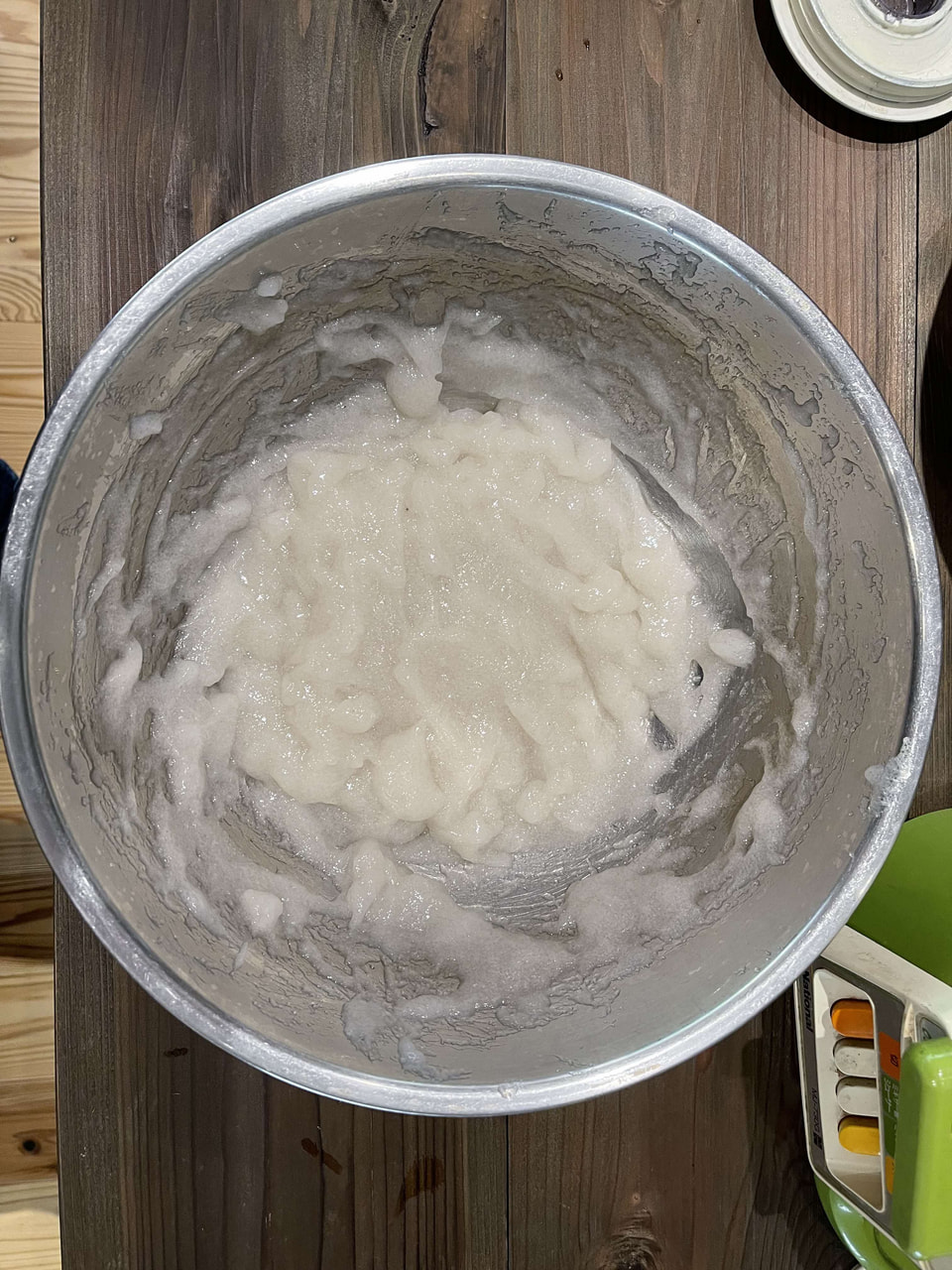
Next, similar to making dough, we start hand stirring the konjac in order to solidify it.
It is pretty hot so it’s important to keep stirring.


Once the kojac has started to harden, more aku is mixed in to further harden it.
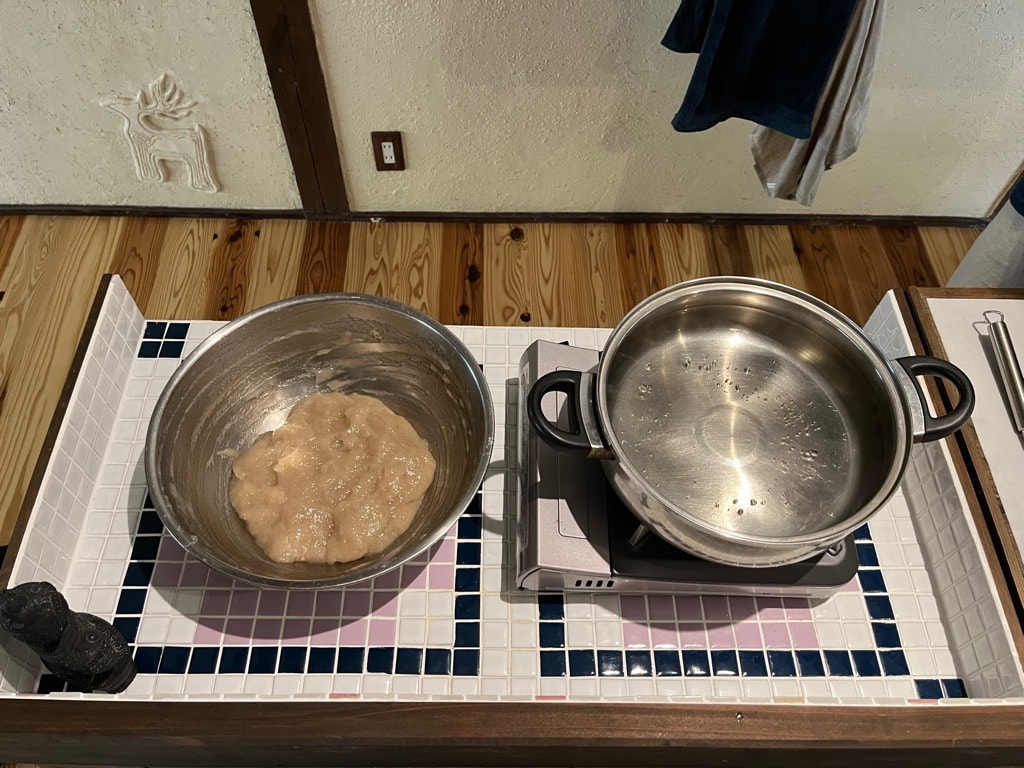
The hardening process took around 15 minutes of hard work.
Next, we are ready to simmer and turn it into konjac jelly!
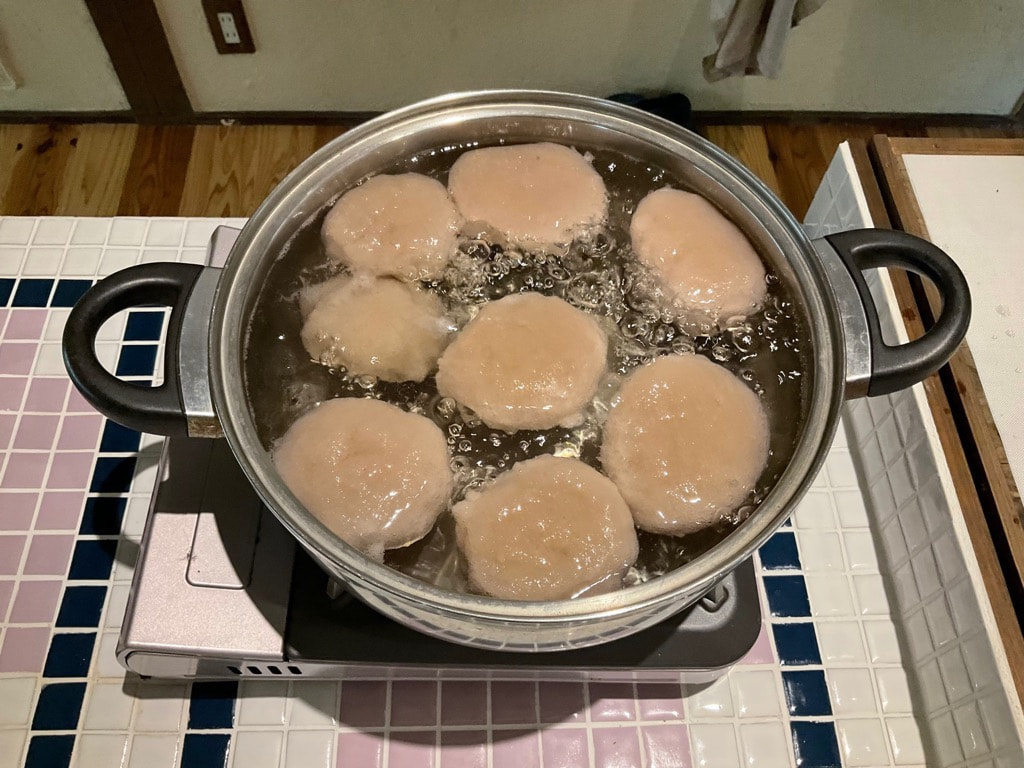
Once it has been completed, it’s time to simmer it for around 40 minutes.
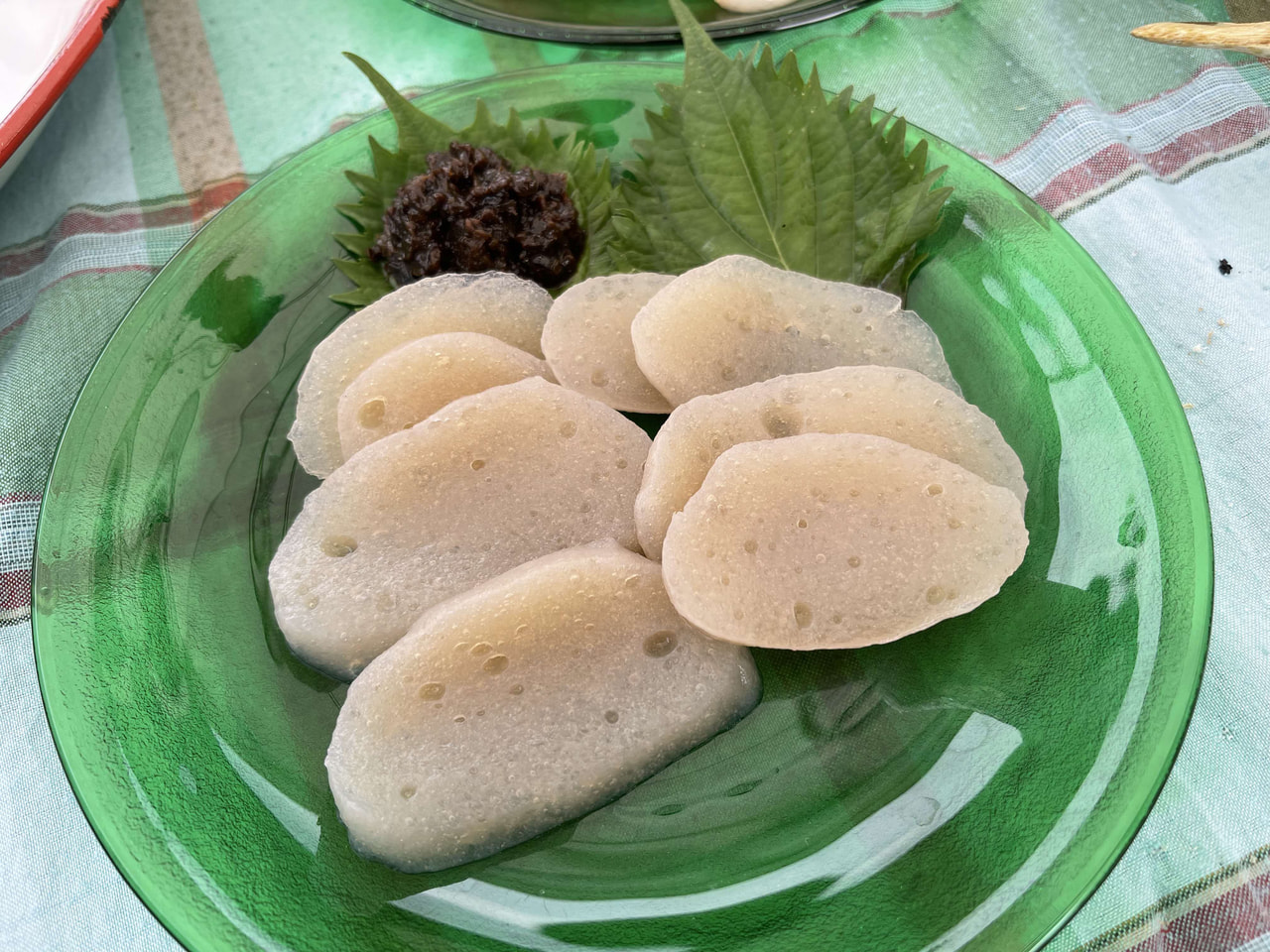
The konjac jelly was served with miso and black sugar sauce.
It doesn’t have much flavor by itself, but it tastes very refreshing and balanced with the sauce.
You’ll definitely love this experience if you’re a fan of konjac jelly!
Conclusion

Relashanti is perfect for anyone that is looking to spend a slow and relaxing time at a countryside. In the day, you can enjoy fun activities provided by the guesthouse, go mountain climbing, or explore around the area. In the evening, you can sit by the campfire, barbeque, and enjoy the beautiful night sky.

I can’t wait to spend a wonderful time at Relashanti with the animals, barbequing, and setting up a campfire in a chilly night as part of my private trip in the near future.
Information & Access
Address: 312 Iitakacho Tsukide, Matsusaka, Mie 515-1721
Website: Stayjapan (English available)
E-mail: info@nonbiriikoka.com

